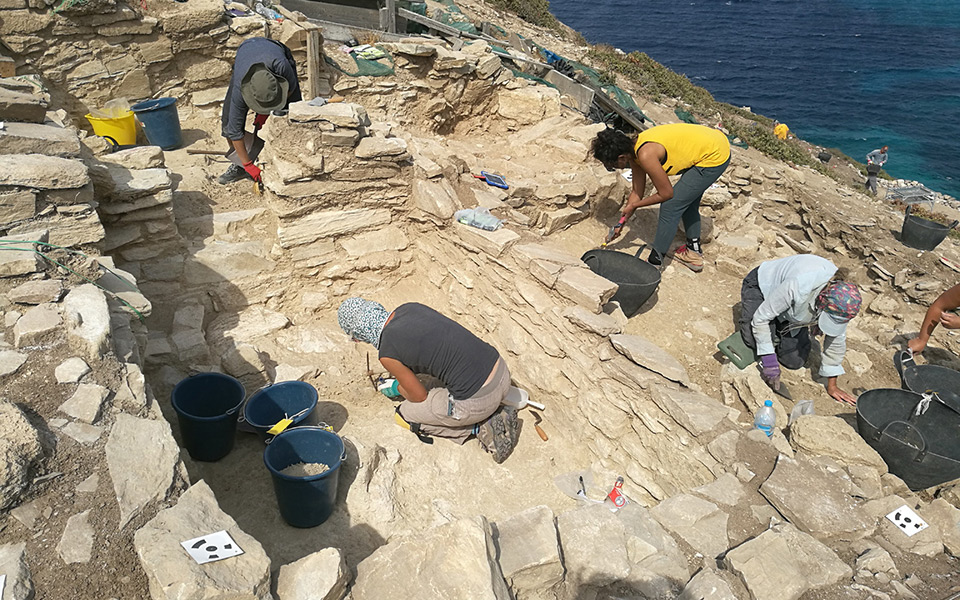Excavations next to the uninhabited Greek islet of Keros, already identified as the enigmatic hub of a forgotten religion, have now revealed traces of intense industrial activity more than 4,500 years ago.
Digs last summer showed that Dhaskalio, a rocky islet once joined to Keros, was once almost completely covered in “unique monumental structures” of gleaming white marble. It also had metal-working facilities and houses, with a sophisticated drainage system underneath.
A statement Wednesday from Greece’s Culture Ministry said prehistoric builders created massive terrace walls that made Dhaskalio look like a stepped pyramid.
According to the ministry, Keros, between the bigger islands of Naxos and Amorgos, was one of the most impressive sites on the Aegean Sea in 3000-2000 B.C. – the dawn of Greek civilization.
This article first appeared on ekathimerini.com.










